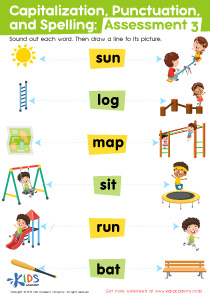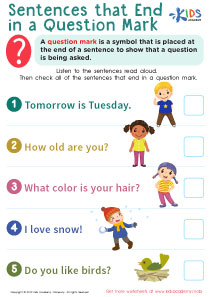Fine motor skills development Writing Worksheets for 8-Year-Olds
12 filtered results
-
From - To
Discover our engaging writing worksheets designed specifically for eight-year-olds to enhance fine motor skills development. Our carefully crafted activities integrate handwriting practice, letter formation, and manipulation games to promote dexterity and control. Children will enjoy tracing letters, connecting dots, and completing fun creative tasks that make learning enjoyable. These worksheets not only support independent writing but also build confidence in young writers. Perfect for home or classroom use, our resources encourage persistent practice, fostering essential skills required for effective communication. Unlock your child's potential and watch their writing flourish with our fine motor skills development worksheets!
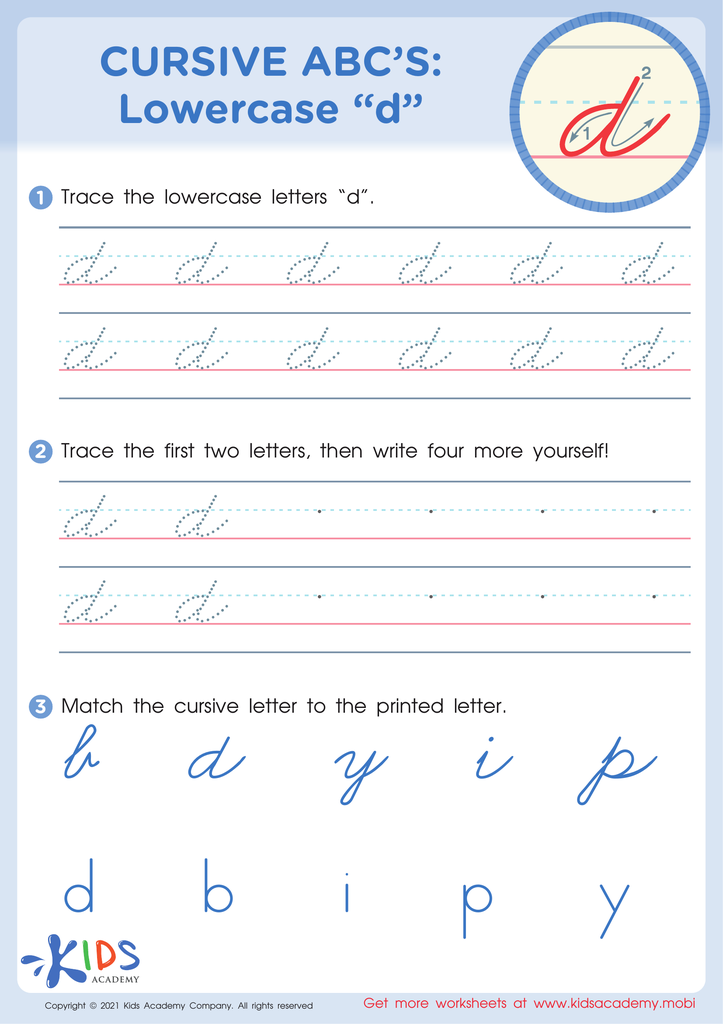

Cursive ABCs: Lowercase d
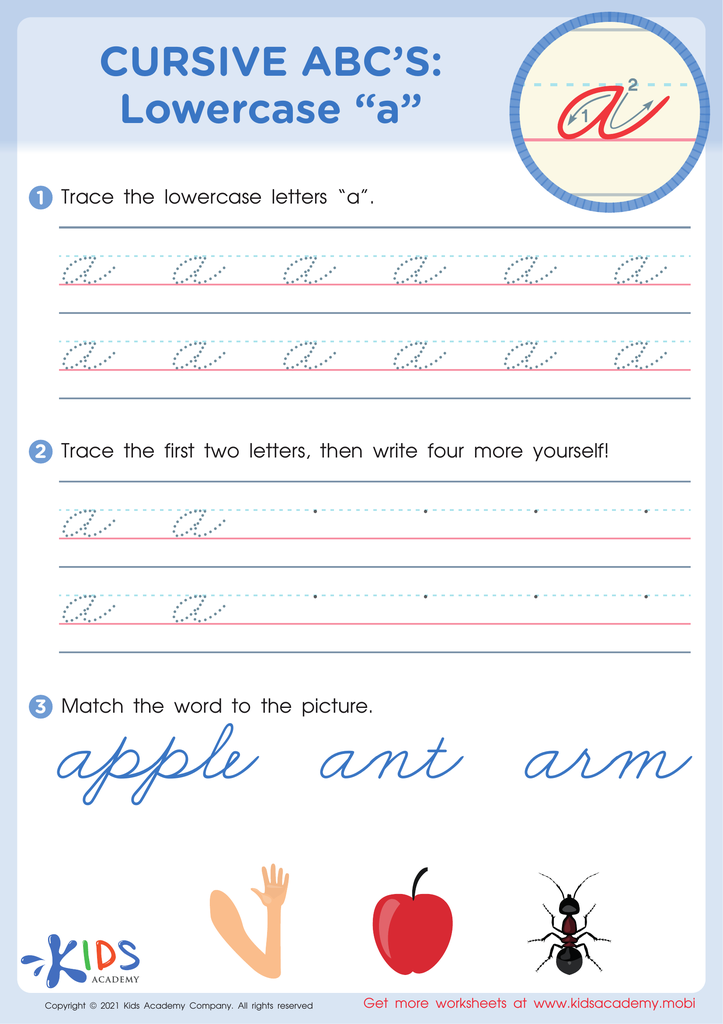

Cursive ABCs: Lowercase a
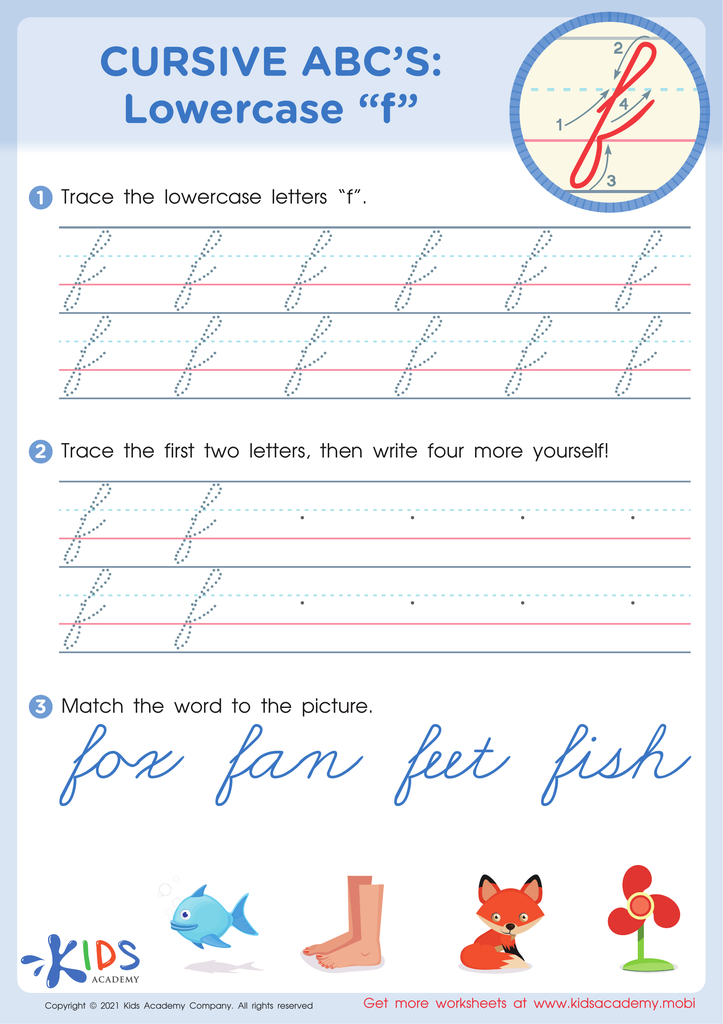

Cursive ABCs: Lowercase f
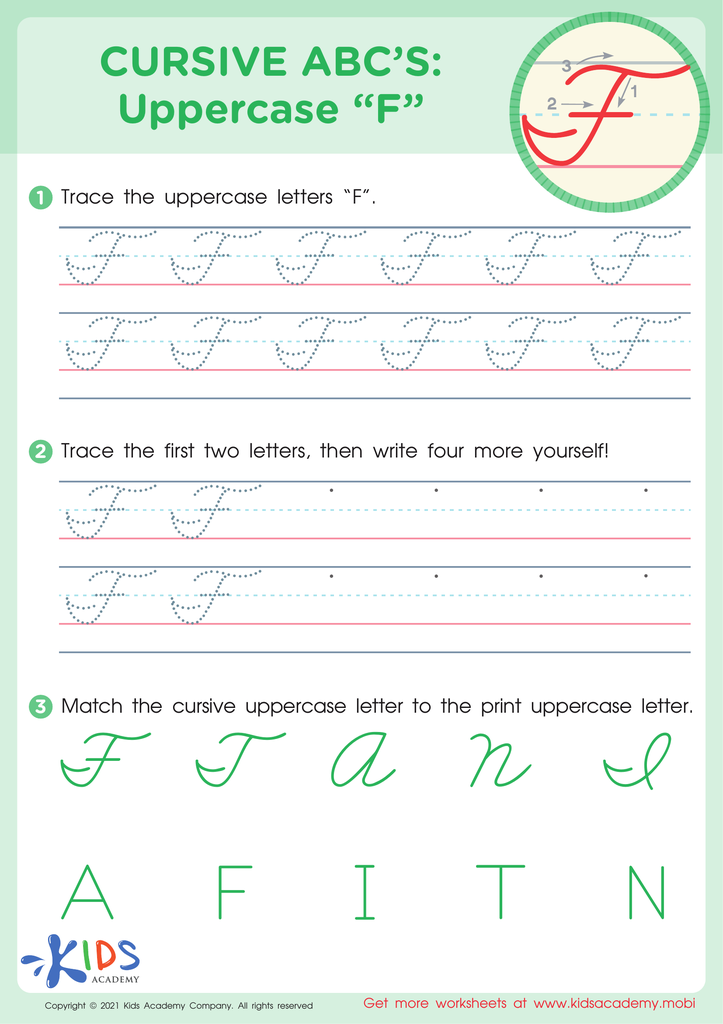

Cursive ABCs: Uppercase F
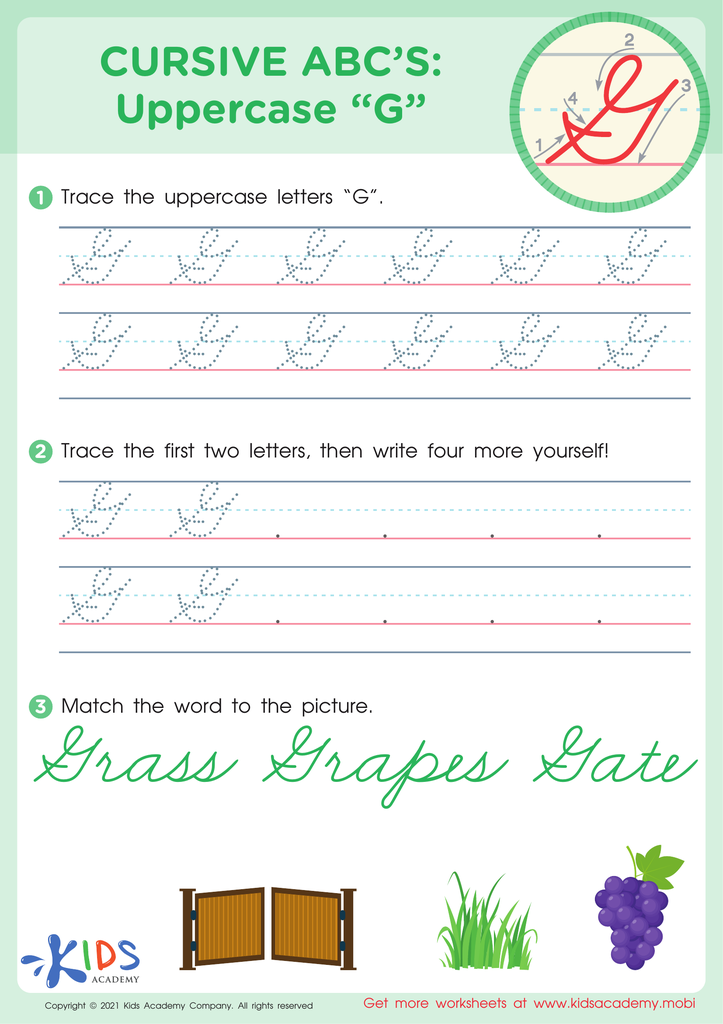

Cursive ABCs: Uppercase G
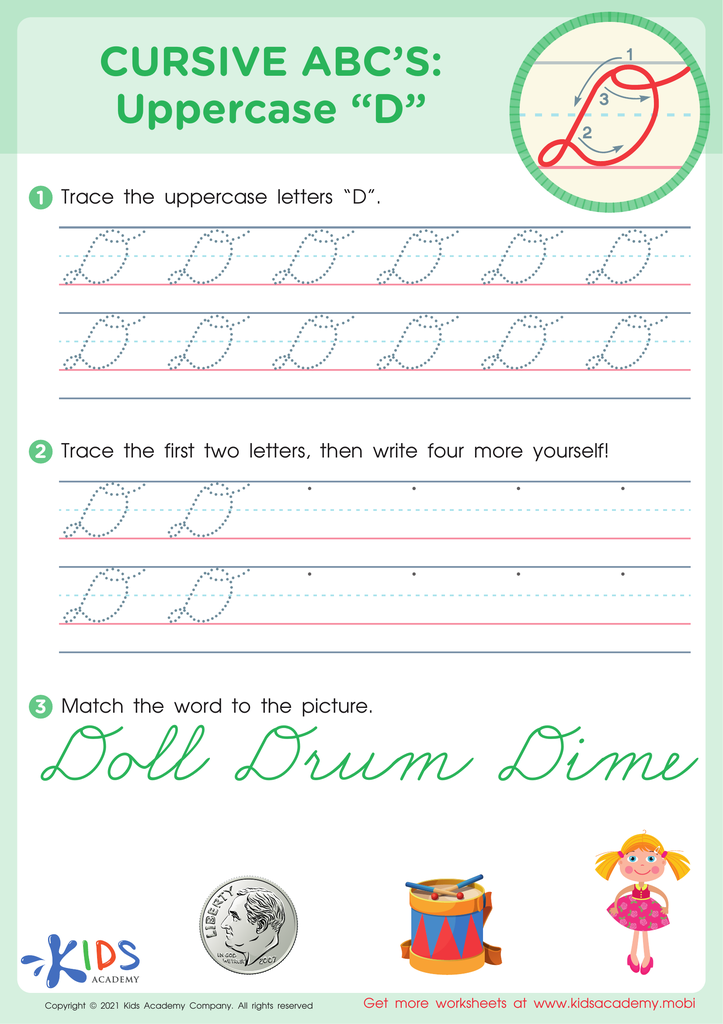

Cursive ABCs: Uppercase D
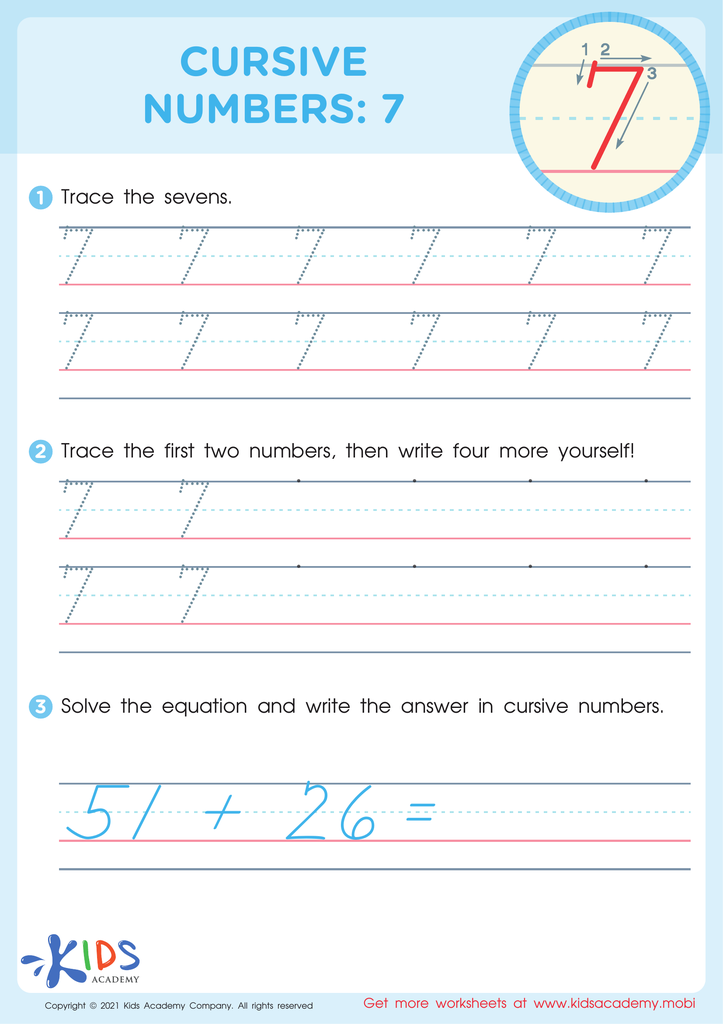

Cursive Numbers: 7 Worksheet
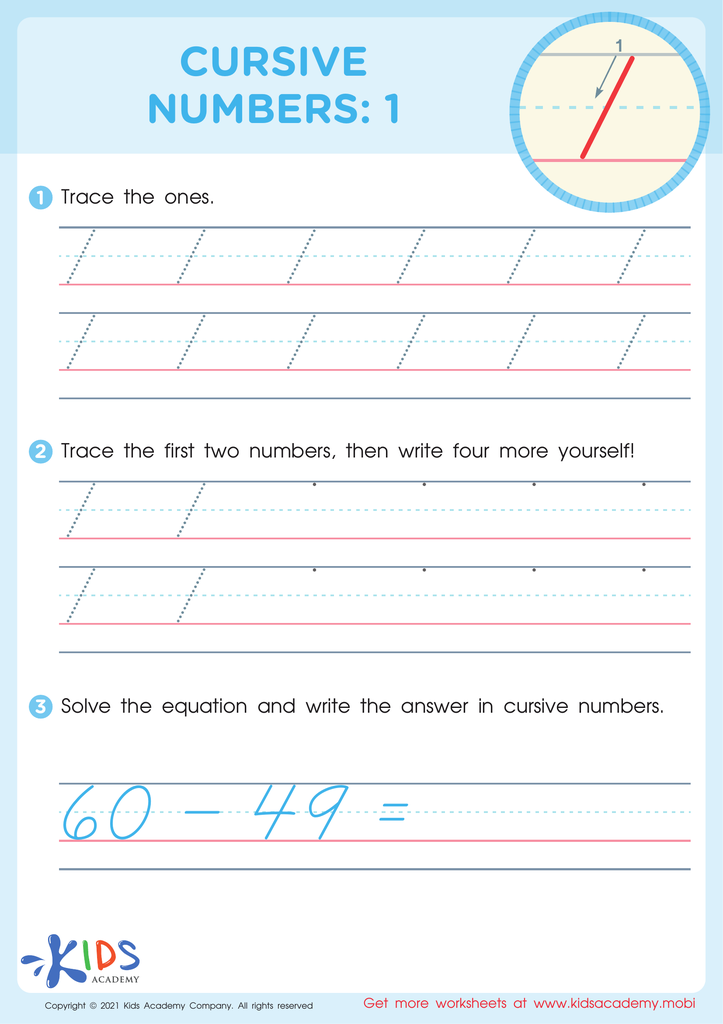

Cursive Numbers: 1 Worksheet
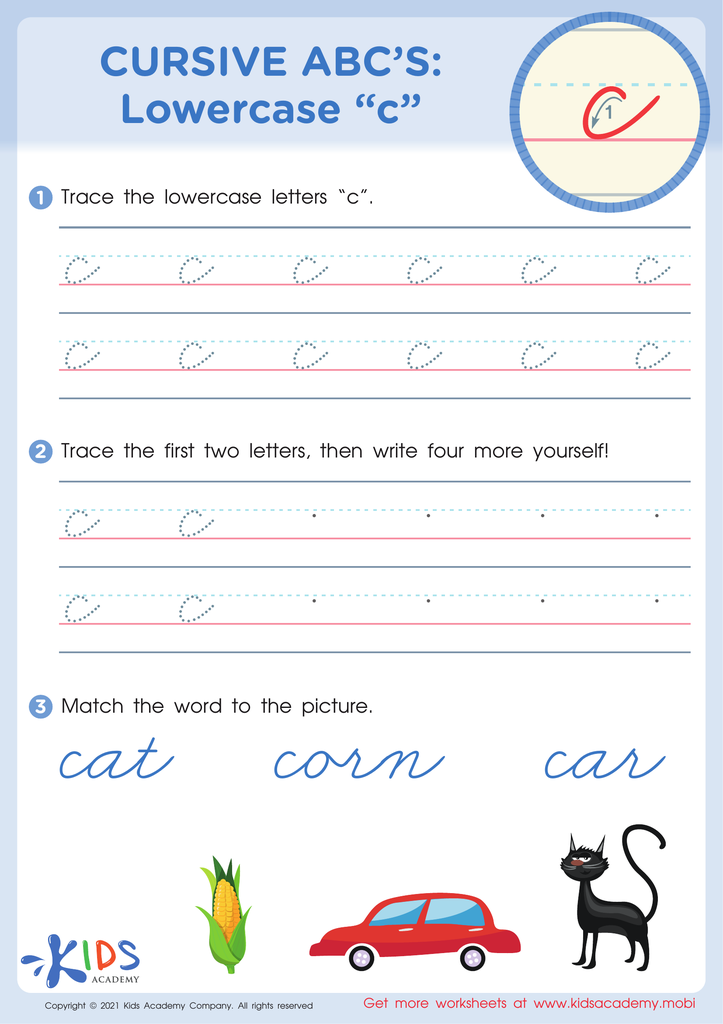

Cursive ABCs: Lowercase c


Cursive ABCs: Lowercase h
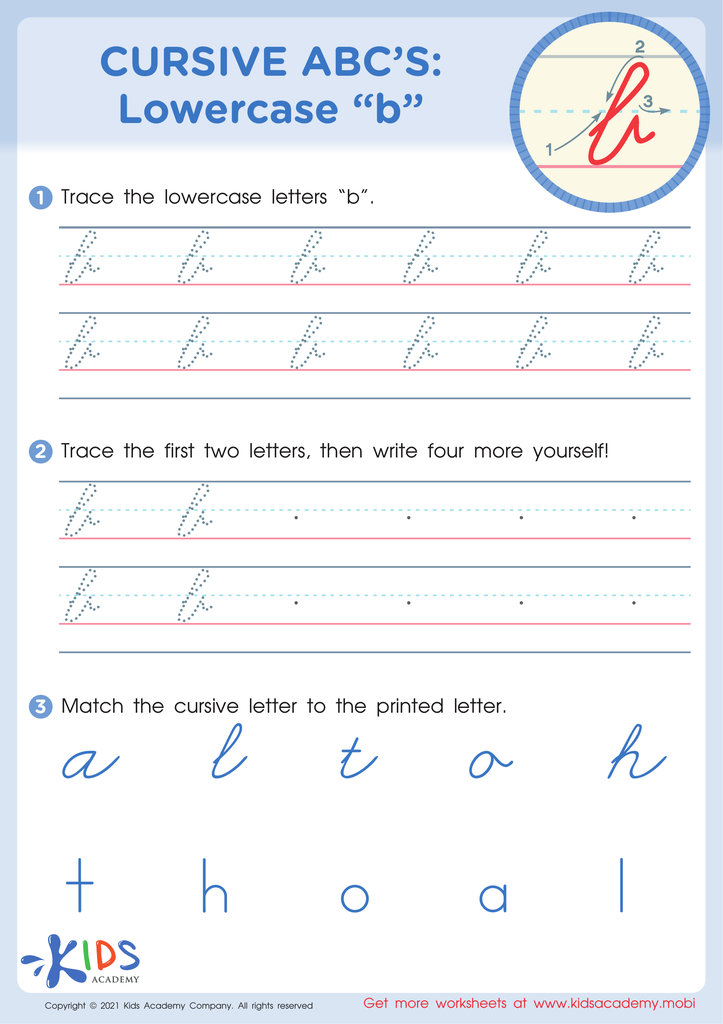

Cursive ABCs: Lowercase b
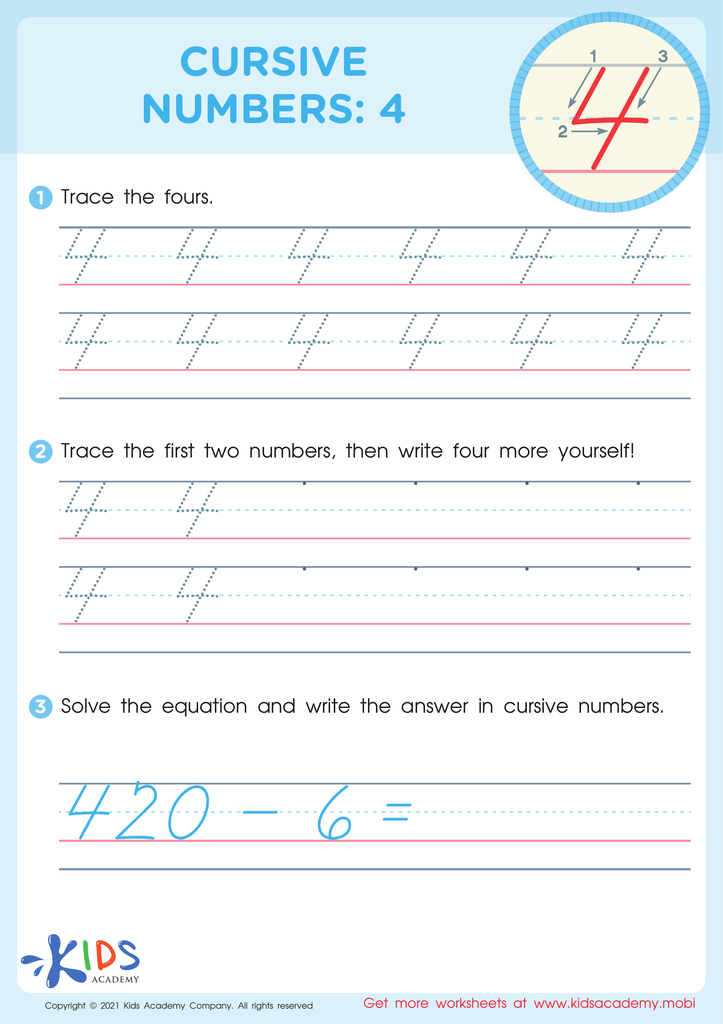

Cursive Numbers: 4 Worksheet
Fine motor skills development is crucial for 8-year-olds as it directly impacts their ability to perform everyday tasks and excel academically. At this age, children refine their hand-eye coordination and dexterity, which are essential for writing, drawing, and engaging in crafts. Strong fine motor skills enable them to grip pencils properly, form letters correctly, and express their ideas clearly on paper. Poor fine motor skills can lead to frustration, affecting their confidence and willingness to participate in writing tasks.
Additionally, these skills lay the foundation for more advanced tasks, such as typing or playing musical instruments, which become important in later schooling. Fine motor competency also promotes independence. Children who can tie their shoes, button their shirts, and manage utensils feel empowered and capable.
Furthermore, development of fine motor skills is linked to cognitive growth. Engaging in activities that build these skills, like puzzles or arts and crafts, not only improves physical coordination but also enhances problem-solving and critical thinking abilities. Therefore, parents and teachers should prioritize fine motor skills development to foster academic success, promote self-esteem, and prepare children for a variety of life skills as they grow. Encouraging practices that enhance these skills is beneficial for their overall development.








